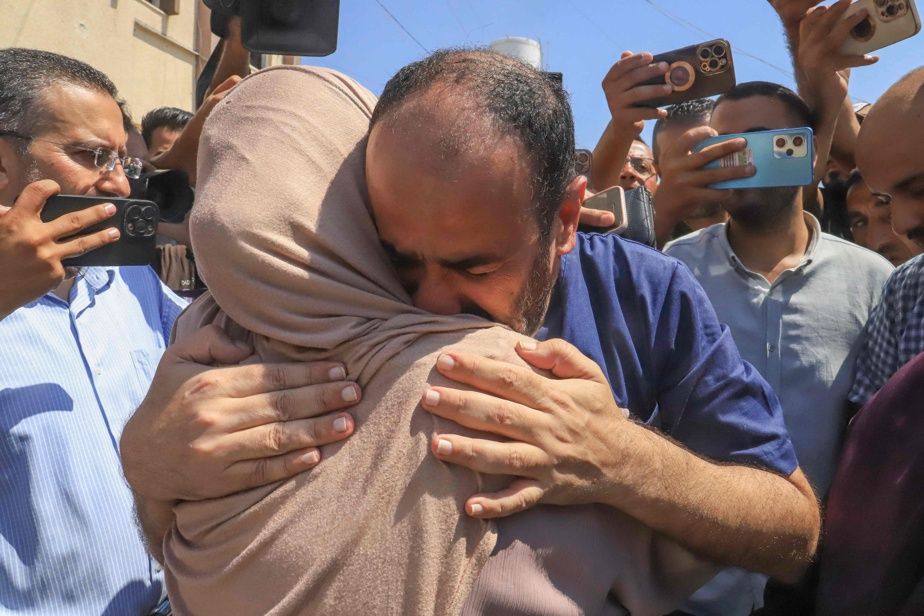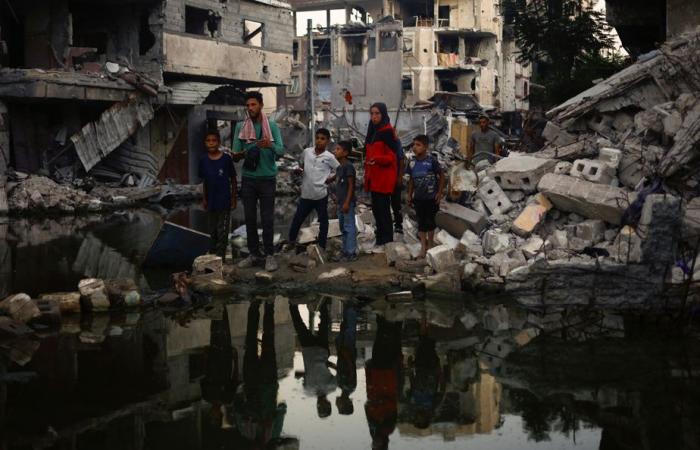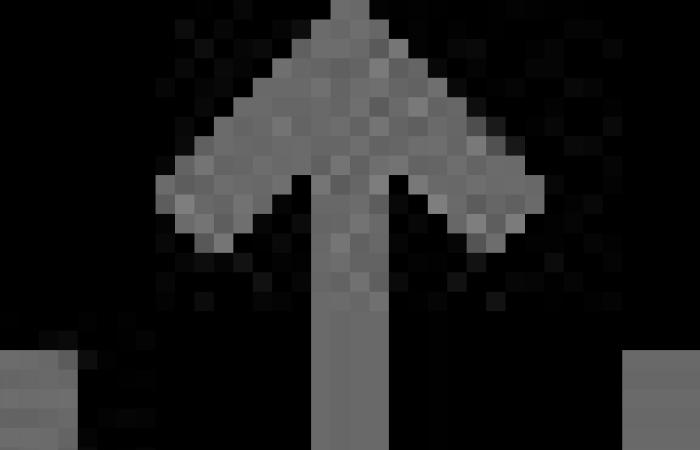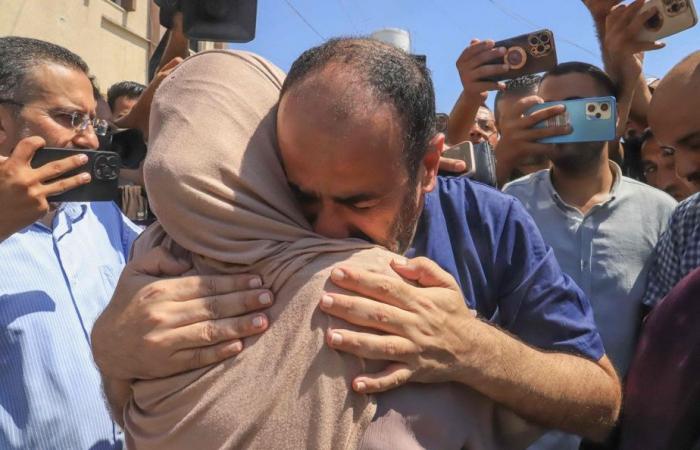The Israeli army on Monday ordered the evacuation of several areas in the southern Gaza Strip, where hundreds of thousands of Palestinians had already fled in May, after a salvo of rockets was fired towards Israel from that region.
Posted at 7:48 a.m.
Updated at 1:37 p.m.
Witnesses said many residents left these areas, in Rafah and Khan Younis governorates, after being ordered to evacuate.
Israeli Prime Minister Benjamin Netanyahu acknowledged on Sunday that the army was waging a “difficult fight” in the Palestinian territory, almost nine months after the start of the war triggered by Hamas’s attack on Israel on October 7.
After launching a ground offensive on October 27 in the northern Gaza Strip, the Israeli army gradually moved south, ordering the evacuation of the areas it was targeting.
On May 7, it launched a ground operation in Rafah, a town on the border with Egypt, then presented as the final stage of the war against the Islamist movement, forcing a million Palestinians to flee, according to the UN.
PHOTO MOHAMMED SALEM
A Palestinian man holds his children in his arms as he walks past buildings destroyed in an Israeli strike in Khan Yunis on June 30.
But in recent weeks, fighting has intensified again in several areas that the army had claimed to control, particularly in the north, while the offensive continues in Rafah.
On Monday, a new evacuation was ordered in the localities of al-Qarara, Bani Suheila and other towns in the eastern governorates of Khan Yunis and Rafah, announced the army’s Arabic spokesperson, Avichay Adraee.
A few hours earlier, Islamic Jihad, a Palestinian armed group allied with Hamas, had claimed responsibility for rocket attacks on Israeli communities near Gaza.
The army reported the firing of “20 projectiles” from the Khan Younis region, which has been transformed into a field of ruins by winter fighting.
“Projectiles were intercepted and others fell in southern Israel,” without causing any casualties, said the army, which responded with artillery fire.
“Hand-to-hand” combat
In the north, Israeli soldiers continued on Monday their operations launched on June 27 in Shujaiya, a neighborhood in the east of Gaza City.
According to the army, “around twenty terrorists were eliminated there by dozens of airstrikes” and “many terrorists were eliminated during combat”.
An AFP correspondent saw helicopters firing on Shujaiya, where Hamas reported fighting.
Between 60,000 and 80,000 people, according to the UN, have fled the east and northeast of Gaza City in recent days.
“We fled Shujaiya. The situation is very difficult. We have no place to stay. We continue to look for water, but we cannot find any,” said a Palestinian who found refuge in the west of Gaza City.
On Monday, the army announced the death in combat of a soldier in southern Gaza, bringing to 317 the number of soldiers killed since October 27.
“Our forces are operating in Rafah, Shujaiya, all over Gaza,” Netanyahu said on Sunday.
“Dozens of terrorists are eliminated every day. It is a difficult fight that we are waging on the ground, sometimes hand-to-hand, and also underground,” he added, referring to the tunnels dug by Hamas since it took power in Gaza in 2007. .
Accusations of “torture”
On Monday, dozens of Palestinian prisoners, including the director of al-Chifa hospital in Gaza City, Mohammed Abou Salmiya, were released by Israel and transferred to hospitals in Gaza, according to a medical source.

PHOTO BASHAR TALEB, AGENCE FRANCE-PRESSE
The director of al-Chifa hospital in Gaza City, Mohammed Abu Salmiya, detained by Israeli forces since November, is greeted by his relatives after his release on November 1is July at the Nasser hospital in Khan Younès.
At Nasser Hospital in Khan Younis, Mr Salmiya said he was subjected to “severe torture” during his seven months in detention.
The attack carried out on October 7 by Hamas commandos infiltrated from the Gaza Strip into southern Israel resulted in the deaths of 1,195 people, mostly civilians, according to an AFP count based on official Israeli data.
Of 251 people kidnapped during the attack, 116 are still held hostage in Gaza, among whom 42 are dead, according to the army.
In retaliation, the Israeli army launched an offensive in Gaza that has so far killed 37,900 people, including 23 in 24 hours, mostly civilians, according to data from the Health Ministry of the Gaza government, led by Hamas.
Mr Netanyahu says he wants to continue the war until Hamas, considered a terrorist organisation by Israel, the United States and the European Union, is eliminated and the hostages are freed. The Islamist movement is demanding a permanent ceasefire and an Israeli withdrawal from the territory.
The war has caused massive population displacement and a humanitarian disaster in the Gaza Strip, where water and food are in short supply. Thousands of children are suffering from malnutrition, according to the World Health Organization.








